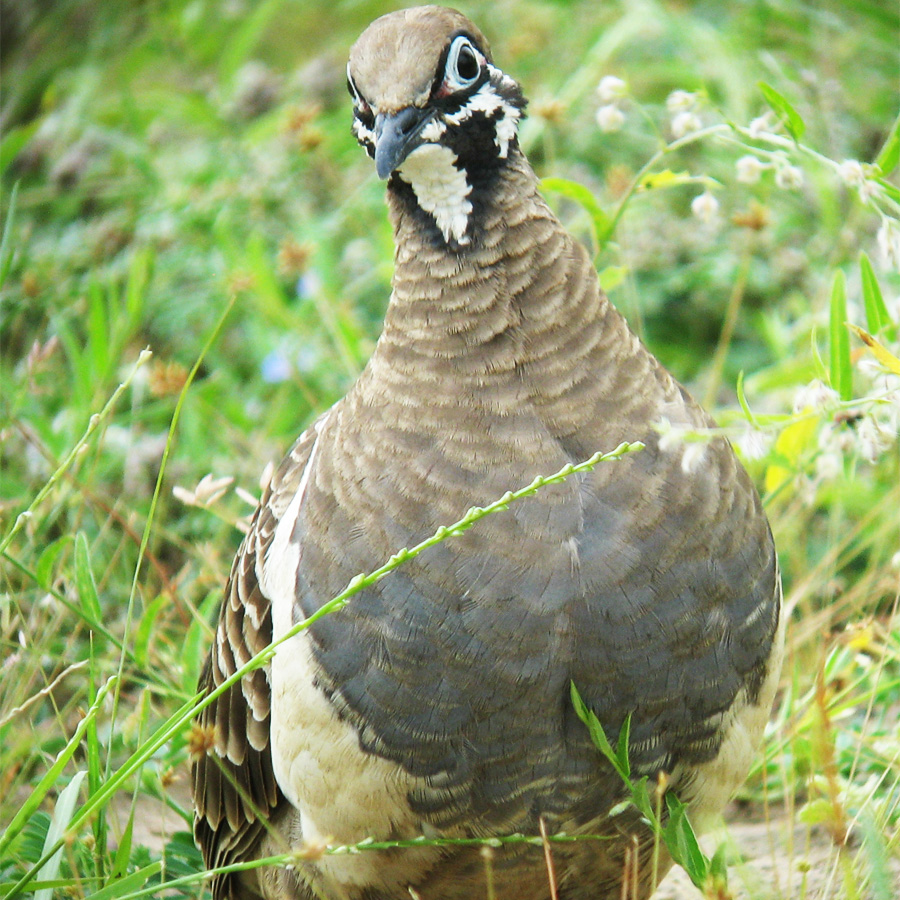Squatter Pigeon (Southern)
Geophaps scripta scripta
Conservation Status:
Queensland State: Vulnerable
Australian Government: Vulnerable
Species and status overview
A bird of the grassy plains and open forests and woodlands, declines of the Squatter pigeon were recorded during the late 19th and early 20th centuries and the species distribution is contracting northwards. Currently, their range extends from the Burdekin-Lynd divide to the Border Rivers region of NSW and west to Hughenden, Longreach and Charleville. Populations south of the Carnarvon Ranges that are isolated or sparsely distributed are considered extremely important to the conservation of the species.
Historically the Squatter pigeon has been impacted by a combination of habitat loss, habitat degradation and predation. These factors continue to threaten the subspecies today.
Squatter pigeons have been recorded locally in the following areas
- Proserpine
- Goorganga Plains
- Crediton SF
- St Helens Creek
- Mt Dryander
- Kelsey Creek
- Dingo Beach
- Hay Creek
- Hook Island
- Pine Mountain
- Kinchant Dam
- Cathu SF
- North Gregory
- Midge Point
Description
The Squatter pigeon is brown with a black face and white markings around the eye, throat, chin and neck. The wings are also brown with pale feather edges, giving a mottled effect. The breast is a deep grey-blue with a distinctive white ‘V’ below it.
Their habitat is dominated by a canopy of Eucalyptus, Corymbia, Acacia or Callitris species. They can also be found in regrowth or partially modified vegetation. Squatter pigeons are only found within three km of a water body or water course, and when breeding must be within 1 km. Their breeding habitat is in well-drained gravelly, sandy or loamy soil, where they nest in a shallow depression lined with grass and leaves.
When threatened or approached the Squatter pigeon ‘squats’ giving rise to it’s apt common name.
The Squatter pigeon feeds predominantly on fallen seeds of grasses, herbs and shrubs including Acacia species. They will also pick seeds and ticks from the droppings of livestock. Their diet varies seasonally and with the availability of food. They have a distinctive call opting for a soft oop-oop-oop or a harsh, abrupt coo.
Conservation concerns
Known threats include
- Habitat destruction and fragmentation for agricultural or industrial purposes
- Degradation of habitat though overgrazing by livestock
- Degradation of habitat by invasive weeds such as buffel grass
- Predation by feral cats and foxes in combination with native predators such as the dingo, snakes and birds of prey
- Drought and inappropriate fire regimes may exacerbate existing threats
What can I do?
- Maintain or enhance existing habitat through revegetation, weed control and appropriate fire management practices
- Reduce grazing pressure in known Squatter pigeon habitat
- Keep cats indoors
More Information
Photo credit Len Ezzy
